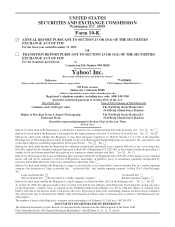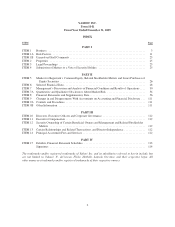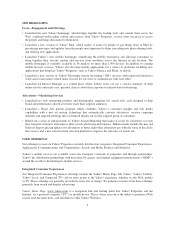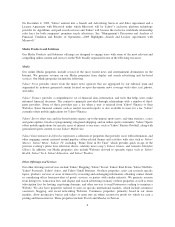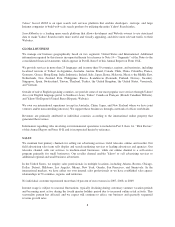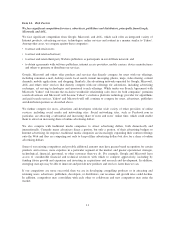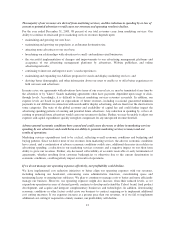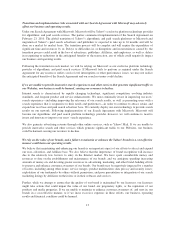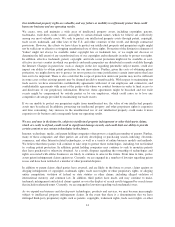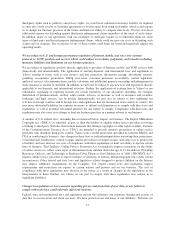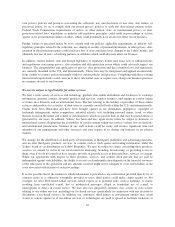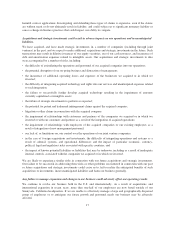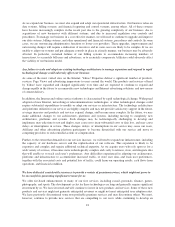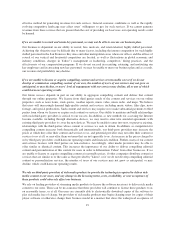Yahoo 2009 Annual Report Download - page 19
Download and view the complete annual report
Please find page 19 of the 2009 Yahoo annual report below. You can navigate through the pages in the report by either clicking on the pages listed below, or by using the keyword search tool below to find specific information within the annual report.Item 1A. Risk Factors
We face significant competition for users, advertisers, publishers and distributors, principally from Google,
Microsoft, and AOL.
We face significant competition from Google, Microsoft, and AOL, which each offer an integrated variety of
Internet products, advertising services, technologies, online services and content in a manner similar to Yahoo!.
Among other areas, we compete against these companies:
• to attract and retain users;
• to attract and retain advertisers;
• to attract and retain third-party Website publishers as participants in our Affiliate network; and
• to obtain agreements with software publishers, internet access providers, mobile carriers, device manufacturers
and others to promote or distribute our services.
Google, Microsoft and others offer products and services that directly compete for users with our offerings,
including consumer e-mail, desktop search, local search, instant messaging, photos, maps, video sharing, content
channels, mobile applications, and shopping. Similarly, the advertising networks operated by Google, Microsoft,
AOL and others offer services that directly compete with our offerings for advertisers, including advertising
exchanges, ad serving technologies and sponsored search offerings. While under our Search Agreement with
Microsoft, Yahoo! will become the exclusive worldwide relationship sales force for both companies’ premium
search advertisers and Microsoft will become Yahoo!’s exclusive platform technology provider for algorithmic
and paid search services, Yahoo! and Microsoft will still continue to compete for users, advertisers, publishers
and distribution partners as described above.
We further compete for users, advertisers and developers with the wide variety of other providers of online
services, including social media and networking sites. Social networking sites, such as Facebook.com in
particular, are attracting a substantial and increasing share of users and users’ online time, which could enable
them to attract an increasing share of online advertising dollars.
We also compete with traditional media companies to attract advertising dollars, both domestically and
internationally. Currently many advertisers direct a portion, but only a portion, of their advertising budgets to
Internet advertising. In response, traditional media companies are increasingly expanding their content offerings
onto the Web and thus are competing not only to keep offline advertising dollars but also for a share of online
advertising dollars.
Some of our existing competitors and possible additional entrants may have greater brand recognition for certain
products and services, more expertise in a particular segment of the market, and greater operational, strategic,
technological, financial, personnel, or other resources than we do. For example, Google and Microsoft have
access to considerable financial and technical resources with which to compete aggressively, including by
funding future growth and expansion and investing in acquisitions and research and development. In addition,
emerging start-ups may be able to innovate and provide new products and services faster than we can.
If our competitors are more successful than we are in developing compelling products or in attracting and
retaining users, advertisers, publishers, developers, or distributors, our revenues and growth rates could decline.
In addition, competitors may consolidate with each other or collaborate and new competitors may enter the
market.
11


